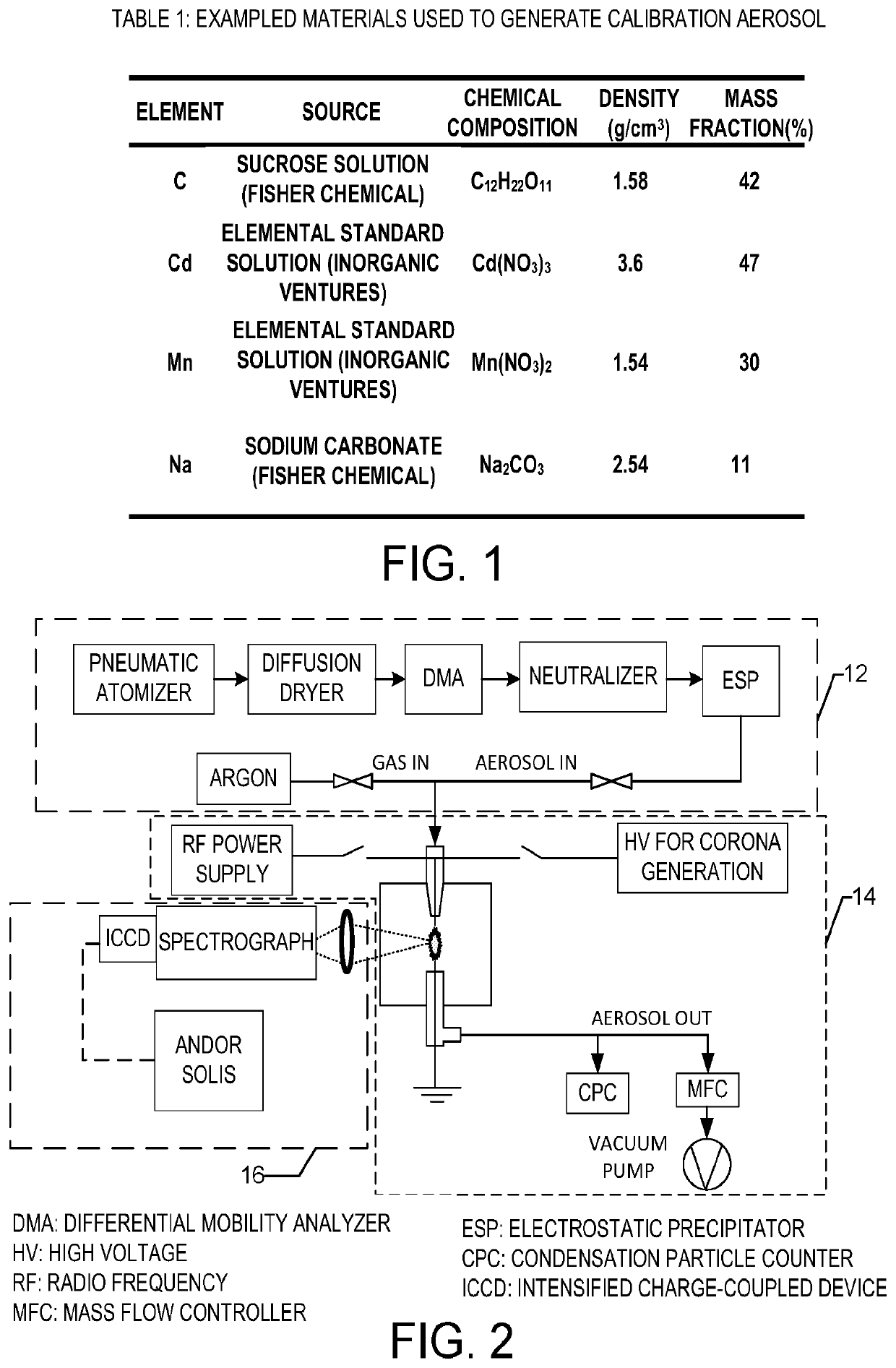Systems and methods for rapid elemental analysis of airborne particles using atmospheric glow discharge optical emission spectroscopy
a technology of optical emission spectroscopy and glow discharge, which is applied in the direction of material excitation, measurement devices, instruments, etc., can solve the problems of labor- and time-intensive subsequent laboratory analysis, large excitation sources used in these methods, and long-term inhalation of toxic particulate matter that could pose a significant health risk to those who are routinely inhal
- Summary
- Abstract
- Description
- Claims
- Application Information
AI Technical Summary
Benefits of technology
Problems solved by technology
Method used
Image
Examples
example method
of Calibration
[0043]One embodiment of a calibration method 400 for calibrating the aerosol analysis system 10 is in FIG. 18. The calibration method 400 includes generating test aerosols at 402 and collecting of the aerosol particles on the flat tip 40 of the ground electrode 32B for predetermined amount of time at 404. The collected particles are ablated by glow discharge at 406 and the time-resolved emission spectra during glow discharge is recorded at 408. The emission signal for a particular analyte of interest for each spectrum is calculated at 410, while the time-integrated signal intensity for the particular analyte of interest is calculated at 412. Lastly, the calibration curve by plotting the integrated signal intensity as a function of analyte mass is constructed.
[0044]The following Equation (1) is used to determine the particulate mass deposited on the electrode for the known diameter of particles:
mp=ηCinQftcρpπ6dv3;(1)
where η is the capture efficiency of particles, Cin is...
PUM
| Property | Measurement | Unit |
|---|---|---|
| temperature | aaaaa | aaaaa |
| Time- | aaaaa | aaaaa |
| Time- | aaaaa | aaaaa |
Abstract
Description
Claims
Application Information
 Login to View More
Login to View More - R&D
- Intellectual Property
- Life Sciences
- Materials
- Tech Scout
- Unparalleled Data Quality
- Higher Quality Content
- 60% Fewer Hallucinations
Browse by: Latest US Patents, China's latest patents, Technical Efficacy Thesaurus, Application Domain, Technology Topic, Popular Technical Reports.
© 2025 PatSnap. All rights reserved.Legal|Privacy policy|Modern Slavery Act Transparency Statement|Sitemap|About US| Contact US: help@patsnap.com



